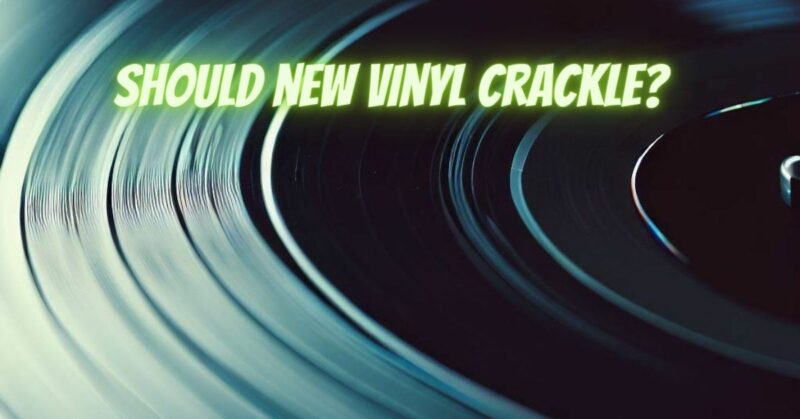Vinyl records, with their warm sound and tactile charm, have experienced a resurgence in popularity in recent years. Audiophiles and music enthusiasts embrace the analog experience, but a common question arises among vinyl aficionados: should new vinyl records exhibit a crackling sound? In this article, we explore the factors that contribute to vinyl crackle, whether it’s a natural characteristic or a sign of potential issues in the manufacturing or playback process.
- The Vinyl Experience: Vinyl records are renowned for their ability to deliver a rich and authentic sound, often described as warmer and more nuanced than digital formats. Part of this charm lies in the analog nature of vinyl, where the stylus physically traces the grooves on the record, capturing every nuance of the original recording. As a result, some level of surface noise, including a subtle crackle, can be considered a normal part of the vinyl experience.
- Vinyl Manufacturing Variability: The manufacturing process of vinyl records involves pressing a stamper onto vinyl pellets, creating the grooves that hold the music. Variations in the vinyl material, the pressing process, and the quality control measures employed by different record plants can lead to differences in the surface noise of vinyl records. Some records may inherently have a slight crackle, while others are exceptionally quiet.
- Dust and Contaminants: One common cause of crackling sounds on vinyl records is dust and contaminants. Even new vinyl records can accumulate microscopic particles during the manufacturing and packaging processes. It’s essential to clean new vinyl thoroughly before the first play to minimize the impact of these contaminants on playback quality.
- Storage and Handling: Improper storage and handling of vinyl records can contribute to crackling issues. Records stored in dusty environments or subjected to rough handling may develop surface noise over time. Ensuring a clean and dust-free environment, handling records with care, and using a clean stylus can mitigate these issues.
- Stylus and Turntable Maintenance: The condition of your turntable and stylus also plays a crucial role in vinyl playback. A worn or dirty stylus can contribute to crackling sounds, and an improperly calibrated turntable may exacerbate surface noise. Regular maintenance, including stylus cleaning and turntable calibration, can help minimize unwanted noise.
- Personal Tolerance and Preferences: Vinyl enthusiasts often have varying tolerance levels for surface noise. Some embrace the nostalgic crackle as part of the vinyl charm, while others prefer a pristine and silent listening experience. Understanding your personal preferences can guide your expectations when it comes to the crackling sounds on vinyl records.
In the world of vinyl records, the presence of crackling sounds is a nuanced aspect of the analog experience. While some level of surface noise is inherent in the medium, it’s crucial to differentiate between the natural crackle that adds character and potential issues arising from manufacturing defects, contaminants, or equipment problems. By maintaining proper vinyl care, cleaning, and turntable maintenance, enthusiasts can strike a balance that allows them to enjoy the unique charm of vinyl without compromising audio quality.

